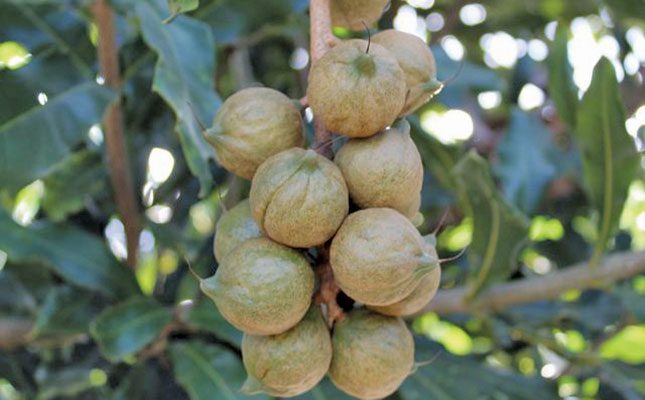
Managing macadamia production when margins are low
Global macadamia prices experienced three consecutive years of decreases post-COVID-19 as consumers had little excess to spend on this luxury nut.
Orchard expansions, done en masse worldwide when prices started climbing in the mid-2010s, are adding an additional 10% per annum to global stocks, creating further pressure on the market.
However, demand is recovering and, according to Roelof van Rooyen, director of Global Macadamias, farmers should start feeling some relief this year.
“The in-shell market saw much movement at the start of the year, as the Asian appetite was whet by low prices. With these stocks mostly sold for the season, the attention has now turned towards kernel, bringing good demand for this important aspect of the supply.”
But Van Rooyen cautions that prices are unlikely to reach the highs seen in 2018, although farmers can look forward to greater stability, as this market matures amid volume increases and expanding inclusion in product ranges.
Right now, however, farmers have little cash to bank on as the last three years took their toll. Juan Winter, managing director of agriservices company Source BI, notes that farmers have faced big losses since skyrocketing input costs compounded the effect of the low prices. And it does not appear as if this part of the equation will rectify itself anytime soon.
“Production costs for 2024 should be similar to the past two years, averaging around R69 000/ha. As things stand, it should be another four years of struggle before things start looking better,” says Winter.
He bases his prediction on the fact that the vast majority of trees in South Africa have yet to reach full production (year seven), meaning that income, if any, is still low.
The Source BI benchmarking tool shows that the biggest pool of trees in South Africa, at 23%, is around five to six years old. Some 18% of trees are around eight years old, while 13% are only four years old.
Research has shown that full-bearing trees average 2,6t/ha in yield.
“This is far lower than what was initially thought, and on which many bank loans were based. Now farmers are faced with lower yields and lower prices, leaving them in a tight spot with their bank managers,” states Winter.
He points to figures that show how dramatically income had reduced between 2019 and 2023. “When prices were at their peak just before the pandemic, farmers averaged an income of R203 910/ha. Last year, that dropped to R82 518/ha.”
To remain sustainable, farmers have two options. They can increase volumes by expanding hectares, or they can increase their margins by reducing input costs and increasing quality. In an ideal world, both could be implemented for maximum returns.
But when the chips are down and farmers have limited cash flow, pricey inputs are usually the first items to be eliminated. Far from being a short-term solution, this can pose risks for years to come as poorly managed trees could take time to recover and reach optimum yield levels even when inputs return to normal.
Cost-reduction strategies
Over the long term, farmers will need to revisit their production strategies to streamline input costs, reduce unnecessary expenditure and focus on maximum efficiency if they wish to remain in business. In the meantime, cash-strapped farmers will need to find a way to keep their orchards alive until cash flow improves.
Ockert Botha, an agronomist at Yara, told growers at a Global Macadamias farmers’ day held in Nelspruit, Mpumalanga, to exercise caution when cutting back on inputs. “Most farmers tend to cut across the board – this is not the wisest approach, as it could influence future profitability.”
Instead, he advised farmers to take the route of increasing margins by reducing input costs. Considering the dearth of income in the current year, this option will need to be taken to the extreme.
“Get block-specific information to determine which ones will deliver the best yields, so you know how each block should be best managed to get a return on the investment.”
Under such a scenario, blocks need to be categorised into those that are profitable, marginal, or breakeven, and those that are unproductive (non-bearing), and managed accordingly.
For profitable blocks, apply a cost-reduction strategy that will maintain profitability. For the marginal blocks, apply a cost-reduction strategy that will minimise yield loss. On the unproductive blocks, one should aim to minimise tree loss. These three strategies could run concurrently on the same farm.
Non-bearing blocks
Standard fertiliser, irrigation or pest control is not an option here. Botha says farmers should instead decide what is absolutely necessary and what matches their budget.
“Pouring money into low-yielding blocks is not wise in such a difficult year when there are no funds to waste.”
This means the focus should be on doing what you can to keep the trees alive, but not necessarily producing a crop.
“When there is no or little income, expenditure should be kept to the absolute minimum. It will not help to spend money growing a crop that you will not be around to harvest if the bank takes the farm back. When the situation is this dire, the goal is to keep the trees alive and not to lose any money, even if it means not making any money,” says Botha.
Low-income years call for reducing maintenance, crop-manipulation applications like hormone treatments, and crop protection. Nutrition should be limited to amounts that will keep trees alive, but not necessarily boost growth.
If a general farm-wide cost-reduction strategy needs to be followed, Botha suggests reducing weed maintenance, using generic rather than original products where the former is cheaper, and eliminating luxury expenses.
Marginal blocks
On blocks where cash flow is not a complete loss or income starts improving, the goal should be to minimise crop losses. This means production practices should be focused on reviving the yield, while still keeping an eye on unnecessary expenses.
Key here is to start with practices that have been proven to provide a good return on investment, while still sticking to the break-even budget.
“Continue to stall practices that will not lead to losses. If the budget increases, ‘nice-to-have’ inputs can be included that will increase yield or quality.
“On some farms, nutrition will likely need to be limited at this stage, including hormonal applications to manipulate flowering and growth. On others it might not be nutrition, but foliar sprays or even soil health improvements that are cut back. These applications should be focused on high-yielding blocks, where farmers will get the biggest return on investment. Pruning costs should be kept to a minimum, or focused on the blocks where it is necessary.”
During this phase, however, it is important to initiate a crop protection regime again, since minimising yield losses needs to be prioritised so that income can improve.
Phytophthora and damage-causing pests like thrips, stink bugs, nut borer, and felted coccid need to be attended to. Farmers should consider cheaper generic alternatives where it makes sense to do so.
Profitable blocks
When things finally start looking up and farmers have stabilised cash flow, the journey to increasing yields can start again. On these blocks, Botha advises farmers to run a ‘normal’ production programme.
If any trees did suffer during the cost-cutting stage, this is the point at which farmers should start feeding them with boosters and supplements that will aid their recovery or increase profitability.
At every step, farmers need to adapt their management programme according to the available funds, increasing their expenditure one step at a time as the economic environment improves.
“During difficult market conditions, farmers need to know what their budgets are, where they can increase their income, and where it will just end up costing money they don’t have,” says Botha.
Email Ockert Botha at ockert.botha@yara.com.
Source: Farmersweekly.co.za
